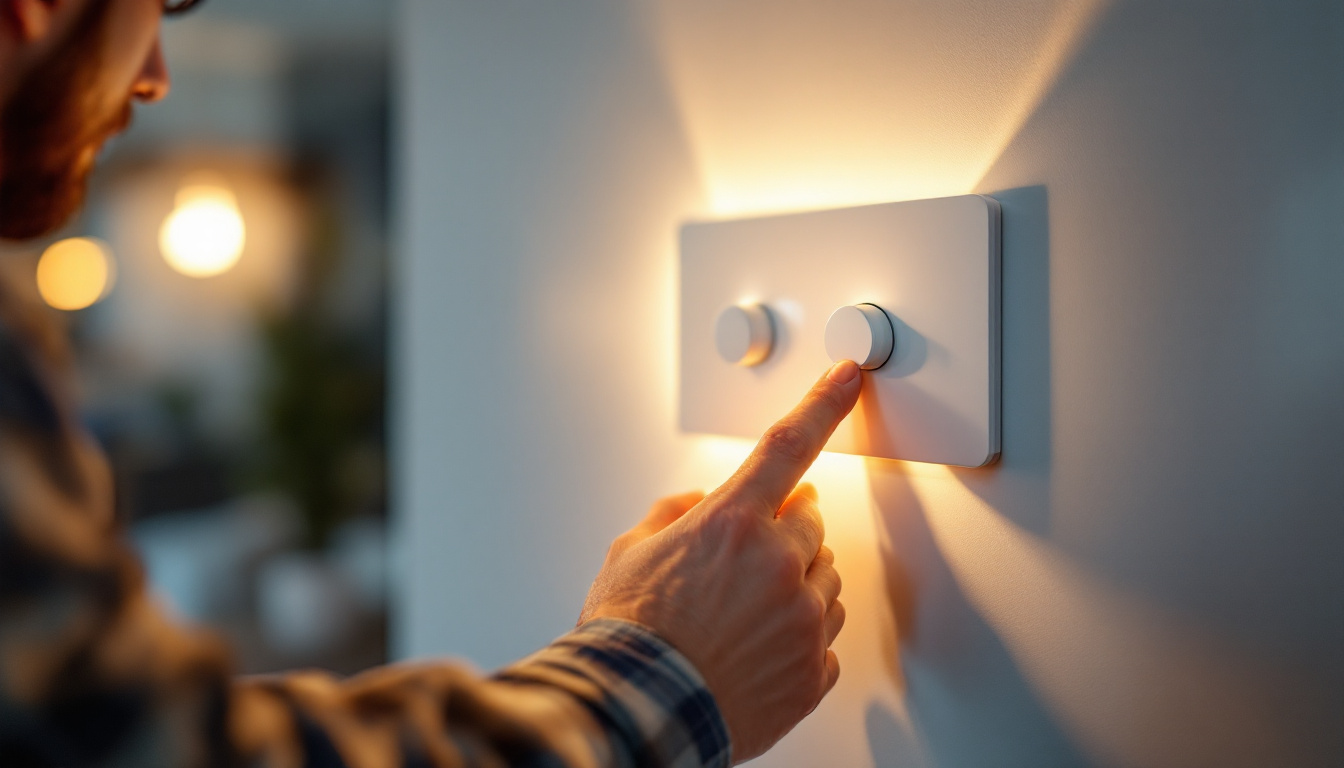

In the world of lighting, understanding the components that make up a lighting system is crucial for any contractor. One such component that plays a significant role in the functionality of various lighting fixtures is the ballast. This handbook aims to provide a comprehensive overview of what a ballast is, its types, functions, and its importance in the lighting industry.
A ballast is an electrical device that regulates the current to the lamps in a lighting fixture. It ensures that the lamps operate efficiently and safely by providing the necessary starting voltage and limiting the current during operation. Without a ballast, fluorescent and HID (high-intensity discharge) lamps would not function properly, leading to flickering lights or even damage to the lamp itself.
In essence, the ballast serves two primary functions: starting the lamp and controlling the current. When a fluorescent lamp is first turned on, it requires a high voltage to initiate the gas discharge process. The ballast provides this initial surge of voltage. Once the lamp is lit, the ballast then regulates the current flowing through the lamp, ensuring it operates within safe limits.
Moreover, the ballast helps maintain a consistent light output. Fluctuations in current can lead to variations in brightness, which can be undesirable in many settings, especially commercial and industrial environments where consistent lighting is essential.
In addition to these functions, ballasts also play a crucial role in energy efficiency. Modern electronic ballasts are designed to minimize energy consumption while maximizing lamp performance. They achieve this by using advanced circuitry that allows for precise control of the electrical current, reducing wasted energy and heat generation. This not only contributes to lower electricity bills but also extends the lifespan of the lamps, making them a more sustainable choice in the long run.
Furthermore, the type of ballast used can significantly impact the overall lighting quality. For instance, electronic ballasts are known for their quiet operation and flicker-free performance, which enhances the comfort of occupants in spaces like offices and schools. In contrast, magnetic ballasts, while still used in some applications, can produce a hum and may cause noticeable flickering, which can be distracting. Understanding the differences between these types of ballasts can help consumers and businesses make informed decisions about their lighting systems, ensuring they choose the most suitable option for their specific needs.
Ballasts come in various types, each designed for specific applications. Understanding these different types is crucial for lighting contractors to choose the right ballast for their projects.
Magnetic ballasts are the traditional type of ballast used in fluorescent lighting systems. They consist of a transformer and a reactor, which work together to regulate the current. While they are reliable and have a long lifespan, magnetic ballasts tend to be heavier and less energy-efficient compared to their electronic counterparts.
One of the drawbacks of magnetic ballasts is that they can produce a humming noise and may cause flickering in the lights, especially as they age. However, they are often favored in certain applications due to their simplicity and durability.
Electronic ballasts have become increasingly popular in recent years due to their efficiency and performance. Unlike magnetic ballasts, electronic ballasts use electronic circuits to control the current, resulting in a lighter and more compact design. They provide a more stable light output and reduce flickering, making them ideal for modern lighting applications.
Additionally, electronic ballasts are more energy-efficient, which can lead to significant cost savings over time. They also have the capability to operate at a higher frequency, which can enhance the color rendering of the light produced.
With the rise of smart lighting technology, smart ballasts have emerged as a cutting-edge solution for lighting systems. These ballasts can communicate with other smart devices, allowing for advanced features such as remote control, dimming, and integration with building management systems.
Smart ballasts can enhance energy efficiency further by adjusting the light output based on occupancy or natural light levels. This adaptability makes them a valuable addition to modern commercial and industrial lighting projects.
Selecting the appropriate ballast for a lighting project involves several considerations. Each project has unique requirements, and understanding these can help contractors make informed decisions.
The first step in choosing a ballast is to consider the type of lamp being used. Different lamps require specific ballasts to function correctly. For instance, fluorescent lamps typically require either magnetic or electronic ballasts, while HID lamps have their own specific ballast requirements. Ensuring compatibility between the lamp and ballast is essential for optimal performance.
Energy efficiency is a critical factor in today’s lighting industry. Contractors should look for ballasts that meet energy efficiency standards and regulations. Electronic ballasts are generally more energy-efficient than magnetic ones, but it’s essential to evaluate the specific energy savings offered by different models.
Incorporating energy-efficient ballasts can lead to reduced operating costs and contribute to sustainability goals, which is increasingly important in many projects.
The environment in which the lighting system will be installed also plays a significant role in ballast selection. For instance, if the lighting will be exposed to extreme temperatures or humidity, it’s crucial to choose a ballast that can withstand those conditions. Additionally, specific applications, such as outdoor lighting or industrial settings, may have unique requirements that must be considered.
Installing a ballast correctly is vital for the overall performance of the lighting system. Here are some essential tips for lighting contractors to ensure a successful installation.
Each ballast comes with specific installation instructions provided by the manufacturer. It’s crucial to follow these guidelines closely to avoid issues during operation. This includes proper wiring, ensuring compatibility with the lamp, and adhering to safety standards.
Failure to follow manufacturer guidelines can lead to malfunctioning lights, safety hazards, and voiding warranties. Taking the time to read and understand the instructions can save contractors from potential headaches down the line.
Before powering on the lighting system, it’s essential to double-check all electrical connections. Loose or faulty connections can lead to flickering lights or complete failure of the system. Ensuring that all connections are secure and properly insulated is a key step in the installation process.
Using the right tools and equipment for the job can also help ensure that connections are made correctly and safely.
Regular maintenance and troubleshooting are essential for keeping lighting systems functioning optimally. Understanding common issues related to ballasts can help contractors address problems quickly and efficiently.
Some common issues with ballasts include flickering lights, buzzing noises, and complete lamp failure. Flickering can often be attributed to a failing ballast, while buzzing may indicate that the ballast is nearing the end of its lifespan. In cases of complete lamp failure, contractors should check the ballast as part of their troubleshooting process.
It’s also important to consider the age of the ballast. Older magnetic ballasts are more prone to failure, and replacing them with newer electronic or smart ballasts can enhance overall performance.
Conducting regular inspections of lighting systems can help identify potential issues before they become significant problems. This includes checking for signs of wear and tear, ensuring that all components are functioning correctly, and replacing ballasts as needed.
Establishing a maintenance schedule can help contractors stay ahead of potential issues and ensure that lighting systems remain efficient and reliable.
As technology continues to evolve, so too does the design and functionality of ballasts. The future of ballast technology is likely to be shaped by advancements in energy efficiency, smart technology, and sustainability.
Smart ballasts are already paving the way for more intelligent lighting systems. As the Internet of Things (IoT) becomes more prevalent, the integration of ballasts with smart systems will likely increase. This will enable contractors to offer clients advanced features such as remote monitoring, automated adjustments based on occupancy, and enhanced energy management.
Such integrations can lead to significant cost savings and improved user experiences, making them an attractive option for modern lighting projects.
With growing awareness of environmental issues, sustainability will continue to be a driving force in the lighting industry. Ballasts that are energy-efficient and made from sustainable materials will be in high demand. Contractors should stay informed about the latest developments in sustainable lighting technology to meet client expectations and regulatory requirements.
Choosing products that align with sustainability goals can also enhance a contractor’s reputation and appeal to environmentally conscious clients.
Understanding ballasts is essential for lighting contractors who want to deliver high-quality, efficient lighting solutions. From the basic functions and types of ballasts to installation tips and future trends, this handbook provides a comprehensive overview of everything contractors need to know about ballasts.
As the lighting industry continues to evolve, staying informed about advancements in ballast technology will enable contractors to provide the best solutions for their clients. By prioritizing energy efficiency, smart technology, and sustainability, lighting contractors can ensure they remain competitive in a rapidly changing market.
Ready to elevate your lighting projects with the highest quality ballasts on the market? Look no further than LumenWholesale. Our extensive selection of spec-grade lighting products is available at unbeatable wholesale prices, ensuring you get the best value for your investment. Say goodbye to local distributor markups and hello to top-tier lighting without the inflated costs. Plus, with free shipping on bulk orders, you can stock up on all the ballasts you need without worrying about extra fees. Don’t compromise on quality or price. Choose LumenWholesale for a seamless blend of excellence and affordability. Wholesale Lighting at the Best Value is just a click away.

Discover the essential facts about light dimmer switches that every lighting contractor should know.

Discover the common pitfalls lighting contractors face when installing outdoor hanging lights for porches.

Discover how dimmable high bay lighting is transforming spaces with real-world success stories from lighting contractors.

Discover essential insights into LED recessed lighting that every lighting contractor should know.
Get notified when NEW deals are released.
Optimize your budget with wholesale discounts.
Only top-quality, specification-grade lighting products.
No additional costs at checkout - what you see is what you pay.
We understand the unique needs of contractors.